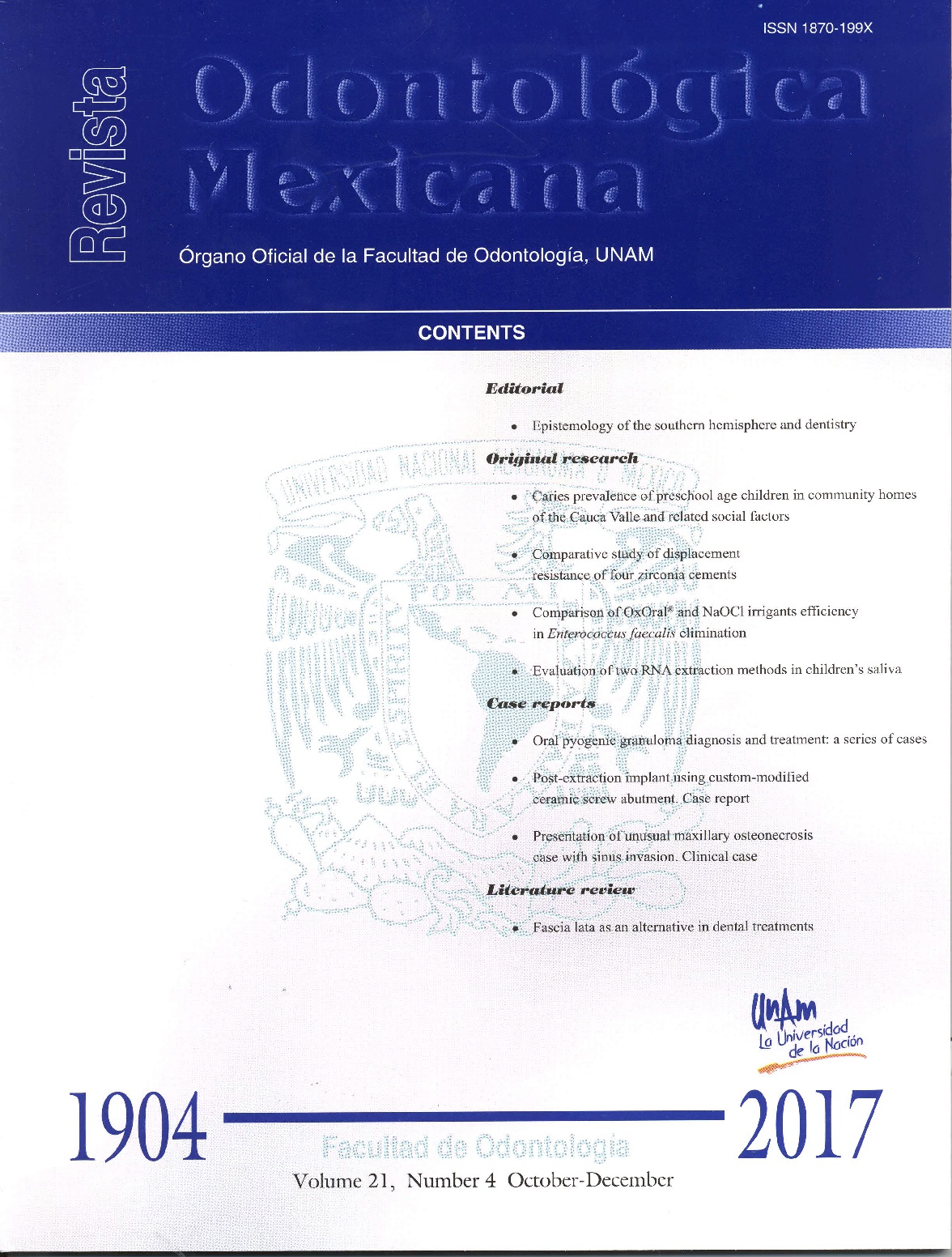Evaluation of two RNA extraction methods in children’s saliva
Contenido principal del artículo
Resumen
Objective: To standardize an RNA (ribonucleic acid) extraction protocol in children’s saliva specimens. Methods: The study was conducted on saliva specimens from 60 children who participated in the study with their parents’ authorization. Comparison of two RNA extraction methods was established; methods assessed concentration, quality and yield. Moreover, genic expression of GUSB gene was achieved with RT-PCR (reverse transcriptasepolymerase chain reaction). Data were analyzed through measurements of central tendency and dispersion, frequencies and percentages. T-Student and χ2 tests were used in order to differentiate between both methods (p < 0.05). Results: Analysis of cell amounts per saliva ml revealed a mean of 564,977.8 (SD = 246,678.6); a RNA in children’s saliva extraction method was standardized, specifically the method using RNeasy® Protect Saliva Mini Kit Qiagen exhibited better characteristics of RNA concentration (p = 0.0000) and yield (p = 0.0000) when compared to the method using QIAzol®; no RNA (p = 0.146) quality differences were found. Conclusions: RNA could be extracted from children’s saliva specimens, therefore, it is suggested to use saliva for the molecular analysis of different oral and systemic diseases.
Detalles del artículo
Cómo citar
Madera Anaya, M. V., & Suárez Causado, A. (2018). Evaluation of two RNA extraction methods in children’s saliva. Revista Odontológica Mexicana Órgano Oficial De La Facultad De Odontología UNAM, 21(4). https://doi.org/10.1016/j.rodmex.2018.01.014

Revista Odontológica Mexicana por Universidad Nacional Autónoma de México se distribuye bajo una Licencia Creative Commons Atribución-NoComercial-SinDerivar 4.0 Internacional.
Basada en una obra en http://revistas.unam.mx/index.php/rom.
